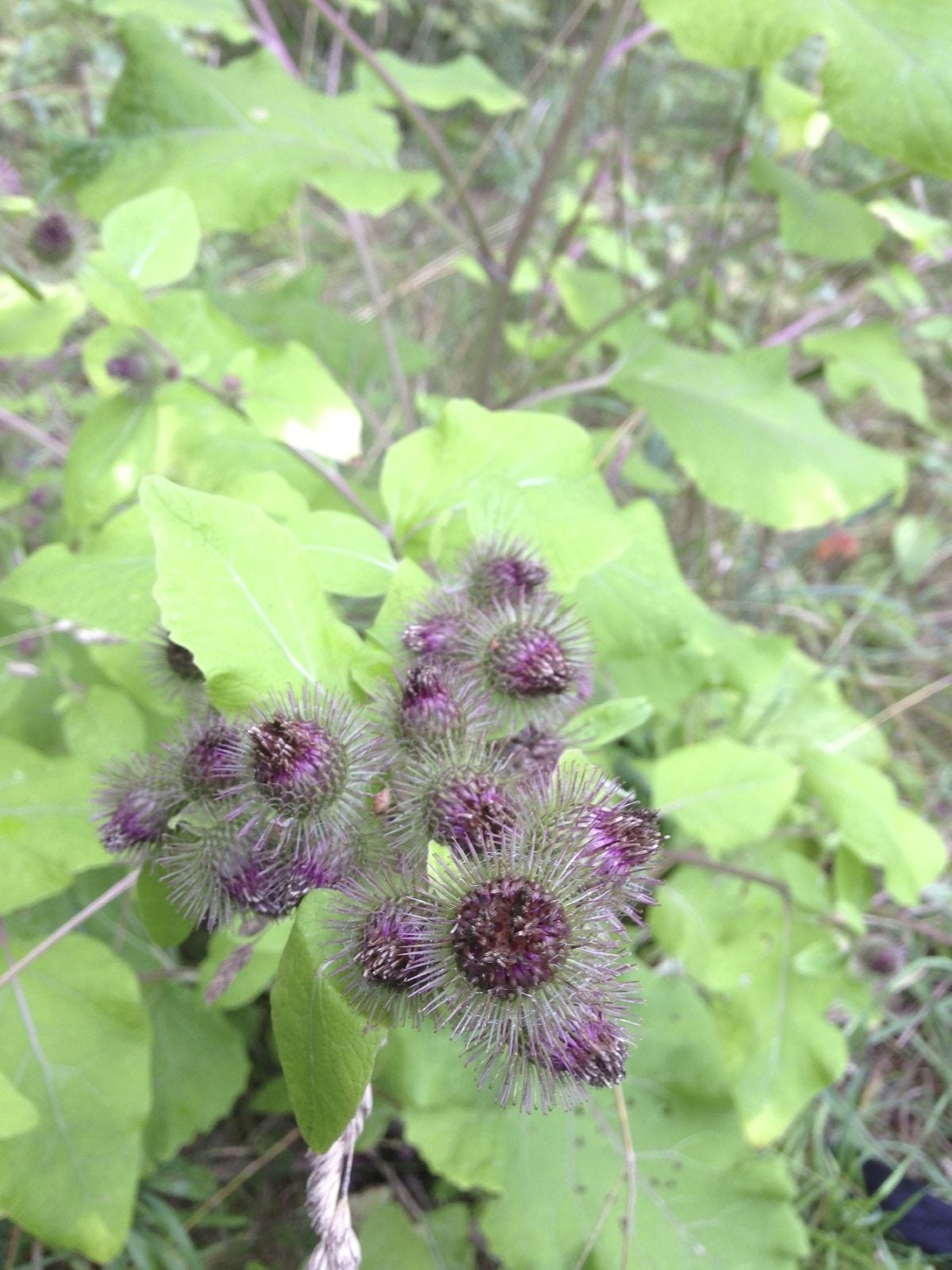Burdock Plant Care – How To Grow Burdock In The Garden
Grow some burdock as an herb or vegetable. It's easy to grow Burdock is an easy plant to grow in your vegetable or herb garden, but it can become invasive.


Burdock Plant Uses: Tips On Growing Burdock Plants In Gardens
The burdock plant is a native of Eurasia but has quickly become naturalized in North America. Burdock is an herbaceous biennial with a long history of edible and medicinal uses by native people.
If you're wishing grow burdock plants, seed is available from numerous sources and the plant is adaptable to any light level and most soils.
This is an easy plant to grow, either as an herbal medicine or as an interesting vegetable. As a part of your medicinal or edible garden, very little burdock plant care is necessary once it's established.
About Burdock Plants
Burdock grows naturally in undisturbed sites where the plant forms a rosette the first year and a flowering spike the second. The roots and young leaves and shoots are edible.
The plant is easy to grow and can produce roots up to 2 feet (61 cm) long in 100 days or less. It's easier to harvest the plant's roots if it's been planted in sandy, loose soil.
Burdock may reach 2 to 9 feet (61 cm. to 3 m) in height, and produces rough, sticky, burred fruits. From these fruits comes its scientific name, Articum lappa. In Greek, "arktos" means bear and "lappos" means seize. This refers to the fruits or seed capsules which are barbed with spurs that grab onto animal fur and clothing. In fact, from this fruit, it is said the idea for Velcro was developed.
The flowers are bright pinkish-purple and are similar to many thistle species. The leaves are broad and lightly lobed.
Gardening tips, videos, info and more delivered right to your inbox!
Sign up for the Gardening Know How newsletter today and receive a free copy of our e-book "How to Grow Delicious Tomatoes".
This plant will self-seed readily and can become a nuisance if not managed. This should pose no problem if you are continually deadheading the plant or if you intend to use it as a root vegetable. Another way to contain the burdock plant is by growing it in pots.
Burdock Plant Uses
Among the many burdock plant uses is in the treatment of scalp and skin problems. It is also known to be a liver treatment and stimulates the digestive system. It is a detoxifying herb and diuretic and has also been used as an antidote in some cases of poisoning.
In China, the seeds are used to treat colds and cough. Medical uses of burdock stem from the plant's use in tinctures and decoctions resulting in salves, lotions, and other topical applications.
Burdock is a popular food plant as well, known as "gobo" in Asian cooking. The roots are eaten either raw or cooked, and leaves and stems are used like spinach.
Indigenous Americans were growing burdock plants in their own vegetable gardens before the country was settled by Europeans.
How to Grow Burdock
- Burdock prefers loamy soil and a neutral pH in areas with average water.
- Seeds should be stratified and germinate at 80 to 90% when sown directly in spring after all danger of frost has passed.
- Plant seeds 1/8 inch (3 mm.) under the soil and keep evenly moist. Germination takes place in one to two weeks.
- Once seed has germinated, young plants grow quickly but it takes some time to establish a taproot of sufficient size to harvest.
- Plants should be spaced at least 18 inches (46 cm.) apart.
- For the most part, burdock has no significant pest or disease issues.
- Continued burdock plant care is minimal but steps may need to be taken to manage the spread of the plant.
- Harvest leaves when young and tender and wait a year before taking the root.
DISCLAIMER: The contents of this article are for educational and gardening purposes only. Before using or ingesting ANY herb or plant for medicinal purposes or otherwise, please consult a physician, medical herbalist or other suitable professional for advice.

Bonnie Grant is a professional landscaper with a Certification in Urban Gardening. She has been gardening and writing for 15 years. A former professional chef, she has a passion for edible landscaping.
-
 Looking For Plants To Give You The Soft And Fuzzies? Try These 5 Fuzzy Leaf Plant Options
Looking For Plants To Give You The Soft And Fuzzies? Try These 5 Fuzzy Leaf Plant OptionsLovers of texture, drama, silver foliage and tactile plants will adore these special sensory garden additions. These fuzzy leaf plant options will leave you all aglow
By Susan Albert
-
 Get Ready For A Summer Of Hummers! Grow These Full Sun Hummingbird Plants and Flowers
Get Ready For A Summer Of Hummers! Grow These Full Sun Hummingbird Plants and FlowersIf you’re lucky enough to enjoy a sunny backyard, make sure you are maxing out on your pollinator opportunities and grow these full sun hummingbird plants and flowers
By Tonya Barnett
